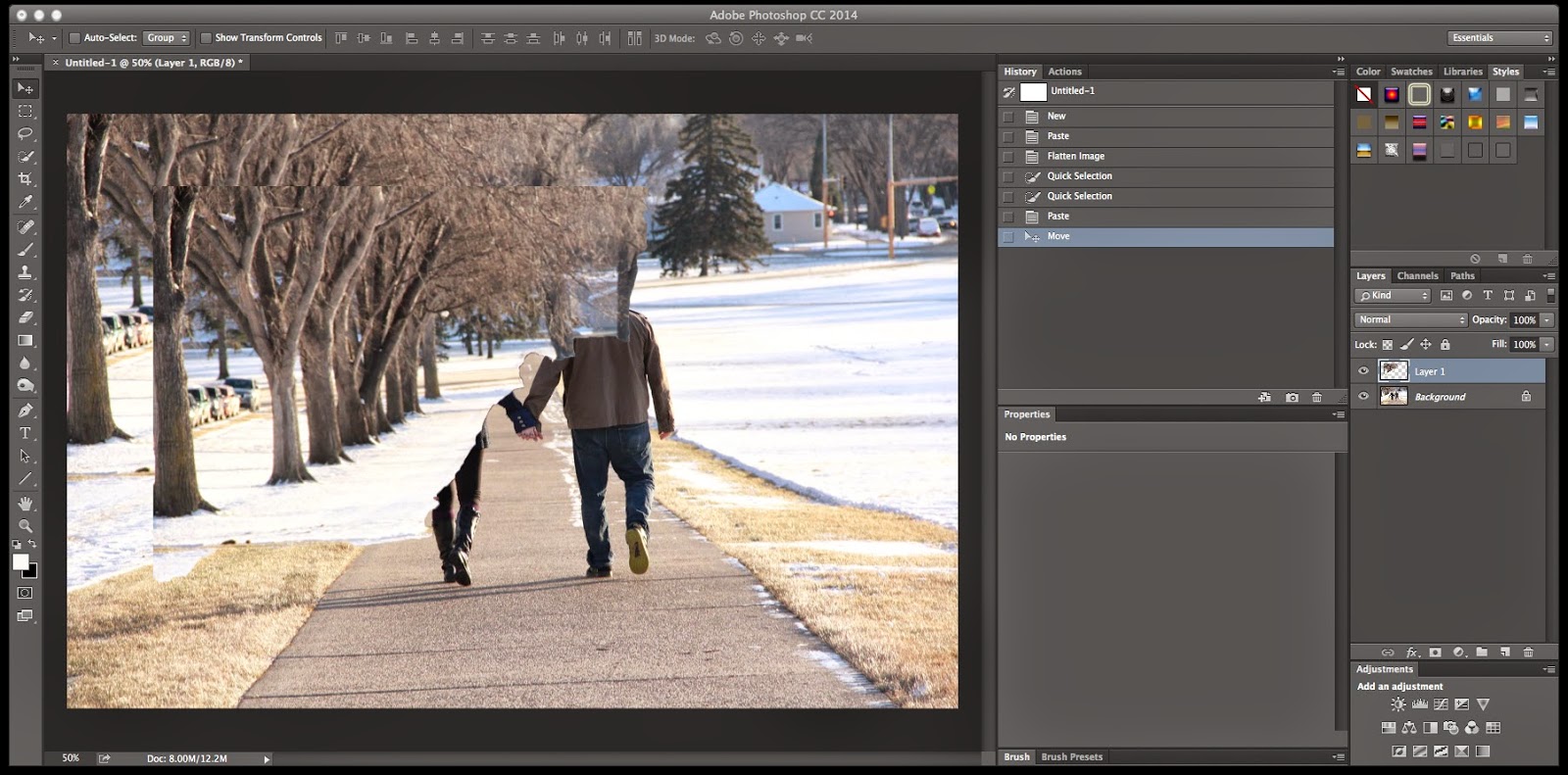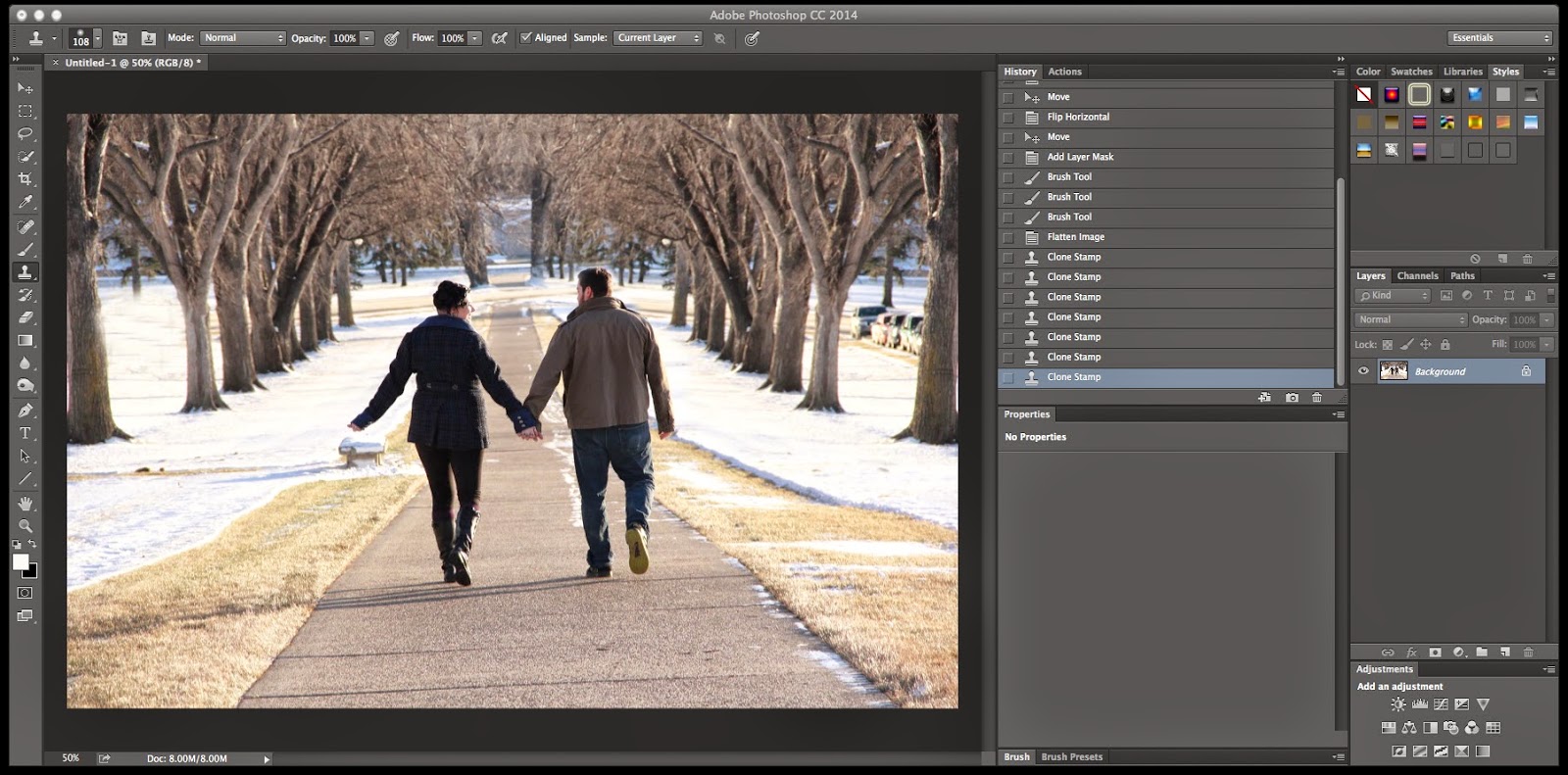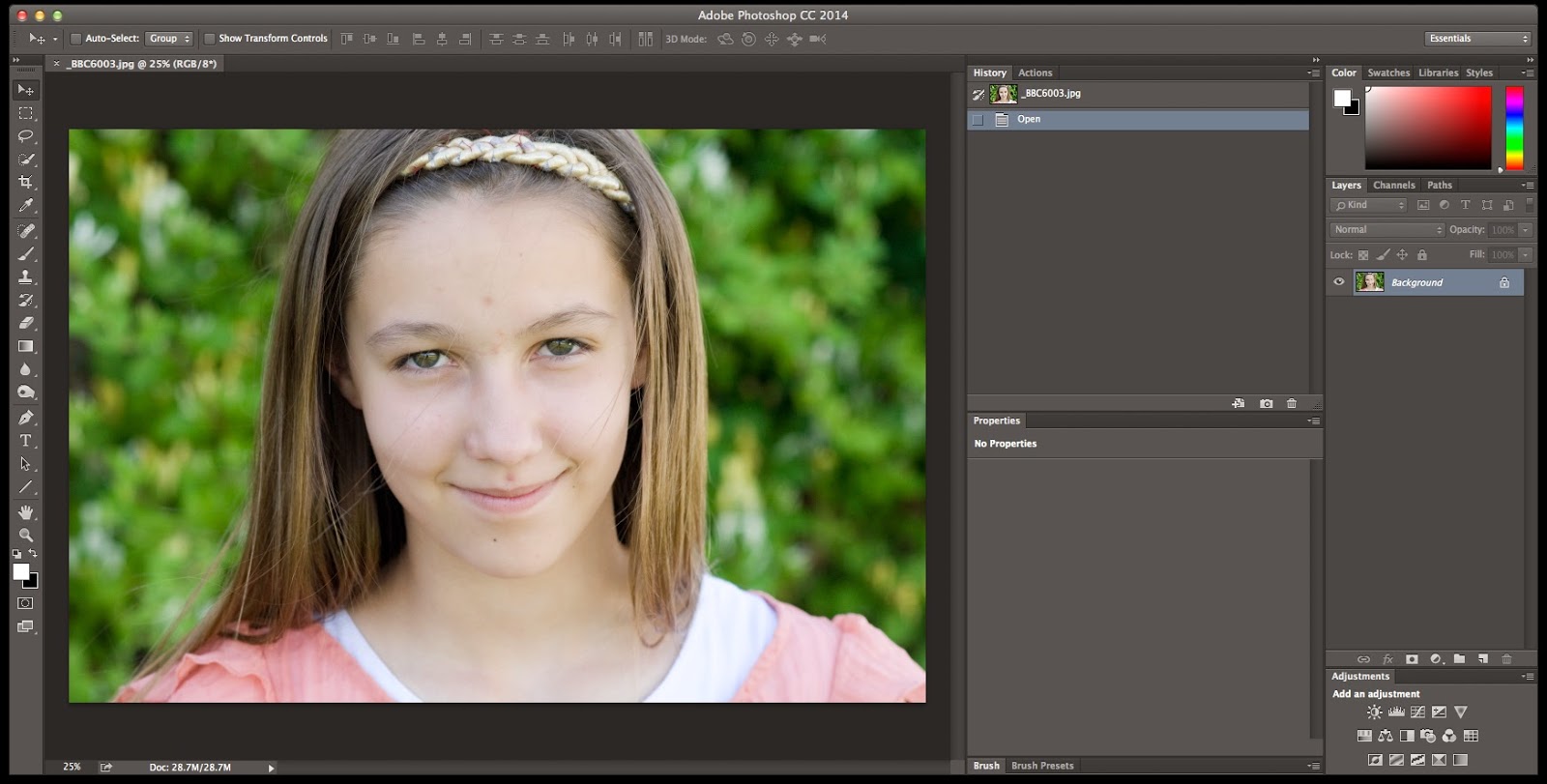It's almost Christmas, and all the little boys and girls are going to be peeking out the window to see if they can spot Santa's sleigh! But why not make it a little more magical for them, and have a picture where they actually do see Santa and his reindeer flying away? In this tutorial, I will show you how to change your window into a magical Christmas scene
And Sorry, I forgot to screen cap as I went along, so all of the layers are already present. But that might be helpful for you experienced photoshop users!
This is the scene we are going to add to the window. As you can see, it is a composite of several images: Moon, clouds, snow, spruce trees, and Santa. There are also a few sparkles painted in around the sleigh.
And here is a breakdown of the layers. I started with a layer of clouds(layers 1©), and duplicated the layer in certain spots to add a little more color where I wanted it. I then added the moon overlay (layer 2) and blended it to screen mode, reducing the opacity slightly. Because blending a white moon can be a little hard, I also put a white radial gradient behind it (layer 3). Next, I brought in my Santa image, which and also reduced the opacity slightly (layer 4). I also wanted to show a bit of a winter scene, so I added spruce trees, again with a screen blend and a layer mask to clean up any edges since it's a picture I took while Christmas tree hunting several years ago and there was a mountain in the background (layer 5).Then I added my snow, two of the same overlay, each with a mask to blend them together (layers 6 & copy). Lastly, I gave Santa's sleigh a few sparkles to imply magic :)

And here is the image we are going to be using. Ideally, it's best to underexpose a starting image like this to avoid harsh lighting on the child's face, which gives the illusion the scene is actually taking place at night.
Again, sorry, I already did all the work, so bear with me. To give more space in the window, I got rid of the panes and outdoors until I was left with was the frame around the outside. I did this using the quick selection tool, the magic eraser and then the cloning tool to clean up the frame. I also quick selected the boy's head and created a layer just for it, making sure to the refine the edge with a touch of feathering and keeping the radius set to smart. That way putting a scene behind his head would look more natural. Then, I imported my Santa scene into the image, put it behind the original image and the copied layer of the boy's head.
The finishing touches were just using the burn tool around the window sill to make it look more like nighttime, adding a photo filter to make it cooler and cleaning up the glare and halo around the boy's head by using a layer mask. I also ended up hating the way the moon stood out in front of the clouds, and cloned a few overtop with a darken blend.
And there you go! Santa magic in the window!
Another example using a starry night, which consists of a star image (exposure 30 seconds, f/4 ISO800), a cloudy sky image, the moon, and of course Santa!
Purchase either of these window overlays in my etsy store!


















































